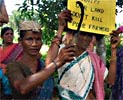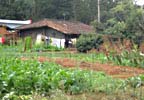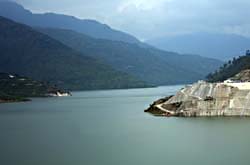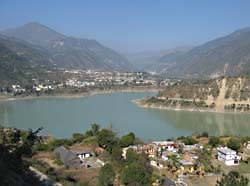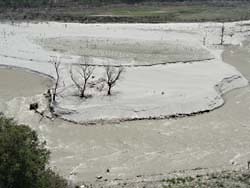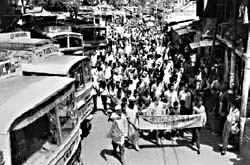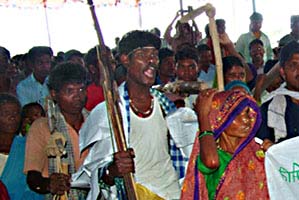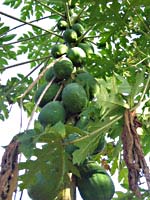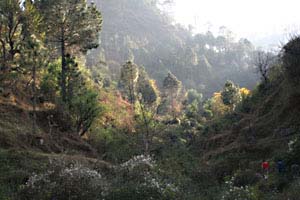Risky Theri Dam
diversity of protests - government stays blind and deaf
Uttarakhand Center
The Tehri Dam in Uttarakhand in the river Ganga is one of the tallest in the world. The project has displaced 100.000 people. There were a lot of protests. Villagers rallied in Dehradun, the state capital. Environmental activists blocked the workplace. The famous Gandhian activist Sunderlal Bahaguna did long hungerstrikes. Students sent protest letters to the government. Geologists pointed out the huge riksks in this earthquake prone area. But still the government went on.
The project will provide New Delhi and other cities with drinking water. But the very fast siltation will make the water to silty to drink in some decades. The same will be the case for irrigation. The project produces electricity, but much less than was forseen. As always with big projects the construction costs became much bigger than was said when the project started.
In short: this project gives a lot of suffering to the people and takes away a lot of nice farm lands. It is very risky and makes economically no sense. Only the big banks and the contractors will benefit. And off course the politicians and government officials who got the bribes. Big bribes for big projects.
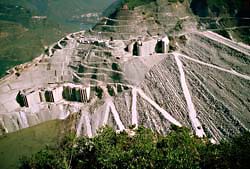 Theri Dam, one of the biggest dams in the world.
Theri Dam, one of the biggest dams in the world.
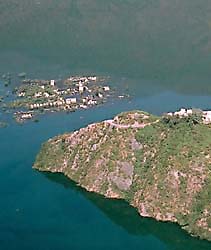 The historical Theri town, half drowned on this photo. Lateron it disappeared completly.
The historical Theri town, half drowned on this photo. Lateron it disappeared completly.
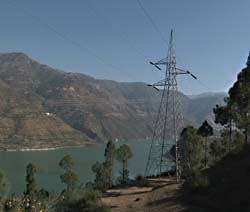 Electricity and drinking water for the cities.
Electricity and drinking water for the cities.
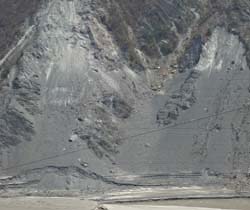 The big landslides will salinate the lake fast.
The big landslides will salinate the lake fast.
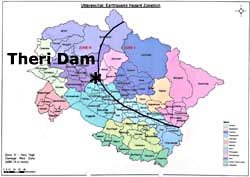 "Zone V - Very High Damage Risk Zone"
"Zone V - Very High Damage Risk Zone"
Go to next article: Raksha Sutra movement to protect the forest
or to Overview articles and photos about resistance in Uttrakhand Center
